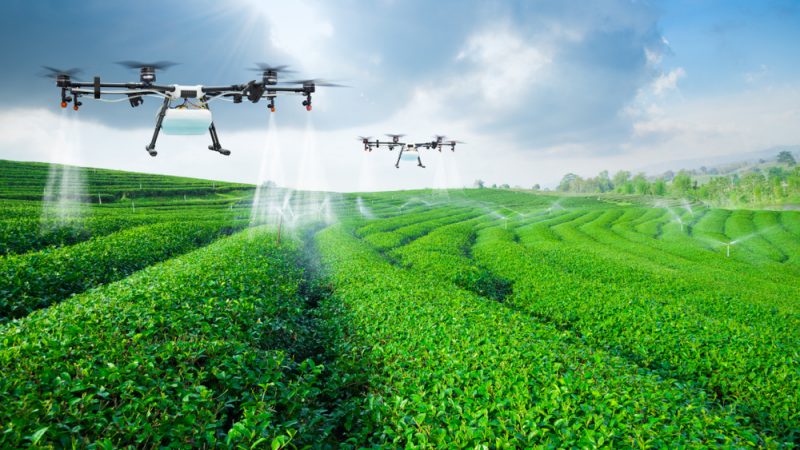Today, 1 billion people are hungry in the world, which causes 40,000 hunger-related deaths every day. Additionally, 10 billion people are predicted to populate the planet by 2050. Shockingly to know that we have enough food on the planet to feed everyone, so producing more food does not solve the problem. “We rather need to change the way we produce food.”, as said by Phil Stevenson, a professor at the University of Greenwich’s Natural Resources Institute in Britain. Next to food insecurity and population growth, climate change also challenges farmers every year.
As a result, smart farming solutions are emerging within the agricultural industry. One force driving smart farming is IoT – the concept of connecting machines and sensors to make processes data-driven. IoT enables farms to optimize processes without spending unnecessary resources. Within this, drones are used to manage agricultural processes. AI software analyzes these pictures, maps or collected data, thus farmers get to accurately evaluate and predict yields, they know which crops need more attention than others and therefore can use pesticides and fertilizers more effectively. Next to drones, farmers make use of several sensors that gather data, analyze it and send it to mobile apps accessible to farmers at any time and place, so they can immediately act upon it.
Another technological improvement in this sector addresses animal farming. Who would have thought Fitbits are for cows too? Organizations in America are offering cow monitoring solutions – known as smart collars. They track cows’ movements and evaluate based on AI whether the cow might be sick and needs to be separated from the herd to prevent spreading of diseases. It can also track the cow’s heartbeat; this might be useful to predict when a pregnant cow might give birth.
Thus, IoT applications and animal “wearables” collect meaningful data for farmers to enhance productivity and sustainability in their products. These are only a few examples of how technology is disrupting the agricultural sector, affecting the environment as little as possible and hopefully meeting the demand for food even under extreme weather conditions.
Last year’s World Food Day’s theme was “Our actions are our future. A #ZeroHunger world by 2030 is possible”. Businesses are increasingly looking committing to innovative tech solutions to help completing this challenge. Let’s see what the future will bring.
References:
Floreano D, Wood RJ (2015) Science, technology and the future of small autonomous drones. Nature 521:460–466.
Smart Farming: Future of Agriculture, https://www.iotforall.com/smart-farming-future-of-agriculture/
Smart Farming or the future of agriculture: https://medium.com/sciforce/smart-farming-or-the-future-of-agriculture-359f0089df69
Going Deep On Food Tech: A Look At Digital Disruption In The Food Industry: https://www.entrepreneur.com/article/297069


Interesting topic! I believe in the future there will be so much more opportunities that technology and data-driven business models will provide for a more sustainable future. For example, cultured meat – meat produced by in vitro cultivation of animal cells, instead of from slaughtered animals – could ensure that less meat is consumed worldwide. Currently, there are still some issues and debates around this topic, predominantly because it is very costly. But, if further technologies will be developed, I think this is a great example of a technology promoting a more sustainable future!
Nice topic! I think agriculture can benefit a lot from integrating data in their business, for example in the climate change and other environmental challenges, as these problems are amongst the biggest threats to agricultural productivity. Data-driven farming can help farmers to more easily anticipate and react to shifts in environmental conditions. By enabling smarter resource management, this might help to fight the climate change problems for farmers.
Another interesting example in the field of high tech in agriculture is the milking robot. Via sensors, software and laser technology he works very accurately 24 hours a day with one of the most unpredictable business units, which are living animals with an own will.